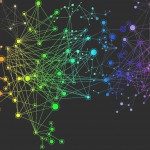Scientific interests: optimization, search (meta)heuristics, explainable artificial intelligence, machine learning, algorithm design and engineering, graph mining, semantic knowledge graphs, reproducibility, systems biomedicine.
I’m currently working on:
- analysis of omics data against cancer,
- integration of explainable AI with decision support systems,
- software tooling around semantic knowledge graphs to help with the two previous problems,
- automated design/configuration (of bioinformatics tools) with search heuristics.
Wants to know (a lot) more? See my homepage:
and follow me on Mastodon.





